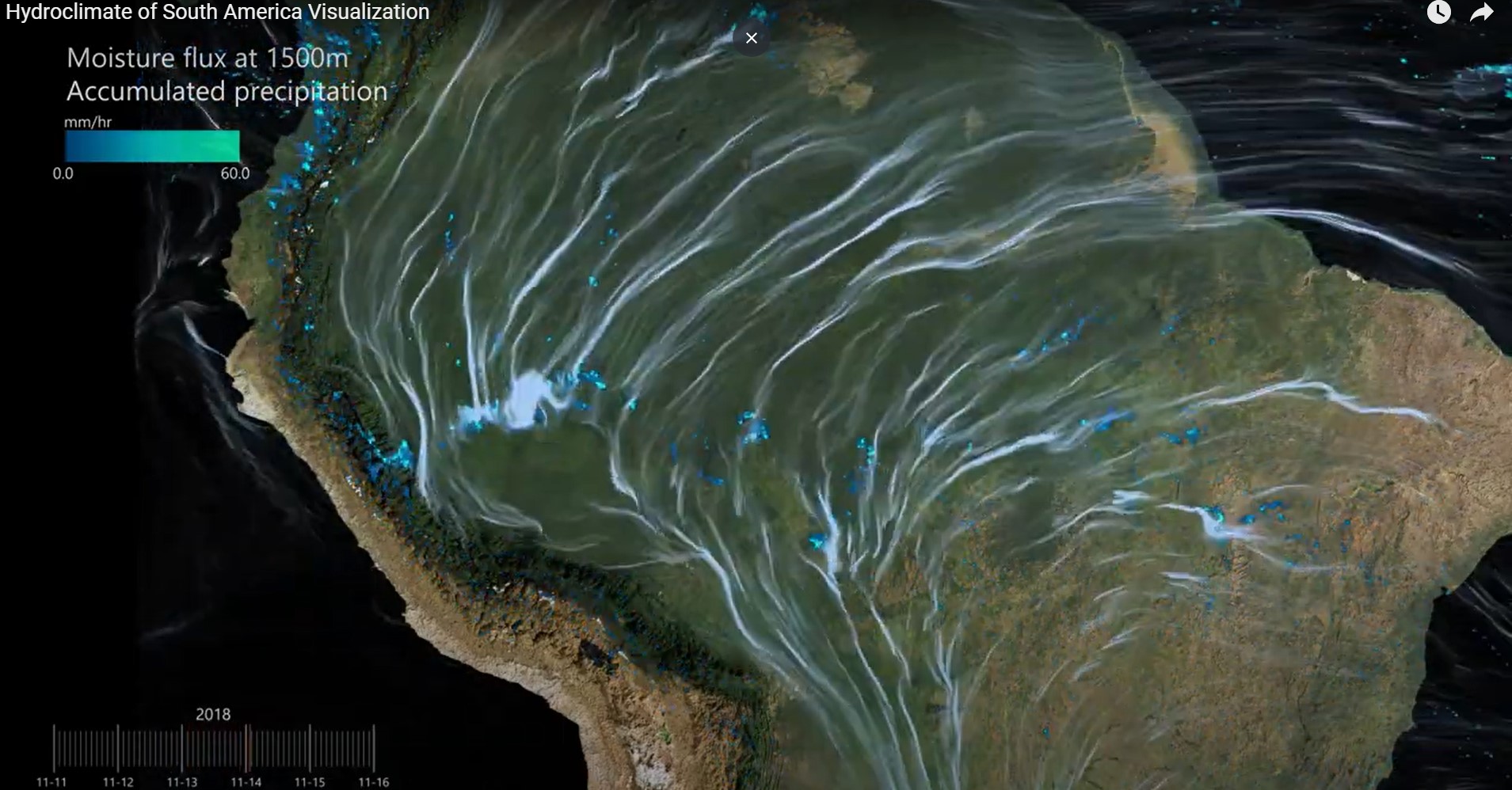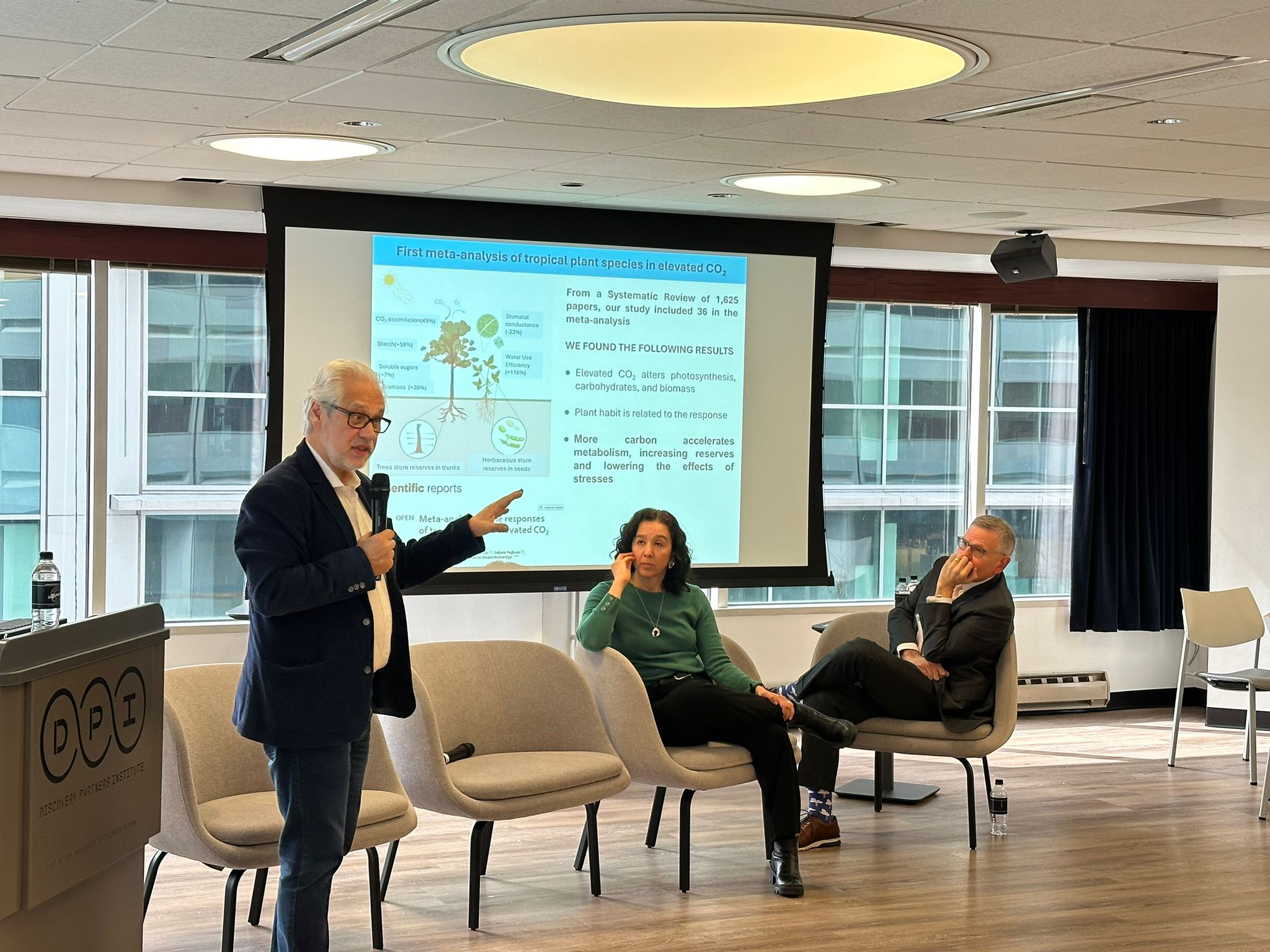


Computer simulation of the South American hydroclimate (image: Changhai Liu e Kyoko Ikeda)
Published on 04/15/2024
By Elton Alisson, in Chicago | Agência FAPESP – A consortium made up of researchers from more than ten countries, including Brazil, the United States and some European nations, is running simulations of the past and future climate in South America with unprecedented resolution. The aim is to create a computer visualization model that more accurately represents the hydroclimatic processes that occur in the region to help decision-makers implement more effective measures to adapt to the impacts of climate change.
The work was presented at a panel discussion on climate on April 10, during FAPESP Week Illinois, in Chicago (United States).
“We’re now beginning to be able to correctly represent the hydroclimate of South America at the scales needed,” said Francina Dominguez, a researcher at the National Center for Supercomputing Applications at the University of Illinois in Urbana-Champaign and coordinator of the project.
According to Dominguez, the climate in South America, like in all regions of the world, is changing. Increased droughts have been recorded in the southern Amazon, the Cerrado region, northern Brazil, and Chile. This scenario has affected agricultural yields, water supplies for reservoirs, hydroelectric power generation, and tens of millions of people in major metropolitan areas such as São Paulo, Rio de Janeiro, and Santiago de Chile.
The Andean glaciers, which are an important source of water, have lost 30% of their area in the tropics and up to 60% in the southern Andes, the highest rates of glacier mass loss in the world. On the other hand, southeastern South America has experienced an increase in annual rainfall and an intensification of heavy precipitation since the beginning of the 20th century.
“South America is facing two gigantic forces, which are climate change and land-use change, which have occurred not only in the Amazon rainforest but also in other areas of the region, such as the Chaco in Argentina. And we also have very big changes in both the global and regional climate. As a result of these processes, we’ve observed that climate extremes are changing across the continent, putting the water and food security of millions of people at risk,” said Dominguez.
Future climate projections are based on global climate models (GCMs). Despite having improved greatly in recent decades, these conceptual representations of the global climate are unable to capture the details of South America’s hydroclimate and exhibit significant distortions, the researcher noted.
Part of this problem is related to the coarse spatial resolution of these models, whose horizontal grid spacing, which represents the land and oceans, is on the order of tens of kilometers (km). As a result, they are unable to correctly represent processes that occur at smaller scales and in mountainous regions, such as relief rain – which occurs when clouds encounter obstacles such as hills and mountains – and snowfall that accumulates on mountains and glaciers.
“With current GCMs, it isn’t possible to see complex topographies, and that’s a problem in South America, where there are the Andes and other areas with that characteristic,” Dominguez said.
GCMs also fail to realistically represent cyclones, low-level jets – the narrow zone of maximum winds that occurs in the first few kilometers of the atmosphere – and storms from organized connective systems.
“In regions of the River Plate basin, as well as in São Paulo and other large urban and agricultural areas in South America, organized convection is one of the most important precipitation mechanisms and is not correctly represented in global climate models,” said Dominguez.
Based on this finding, the researchers, through a research consortium called the South America Affinity Group, have run two computer simulations of a weather research and forecasting (WRF) model with unprecedented high resolution and a grid spacing of 4 km, representing the continent’s historical and future climate.
The aim is to use the historical simulation to validate the model and better understand the hydroclimatic characteristics of the continent in greater detail, and to use the future climate simulation to assess the changes that are likely to occur in South America under a warmer climate.
“This is a major effort involving more than 100 scientists, many of them from Brazil, and most of them from São Paulo,” Dominguez said.
Low computational performance
According to Kelvin Droegemeier, professor of atmospheric sciences at the University of Illinois in Urbana-Champaign, incredibly sophisticated models of the Earth system have been developed in recent years, representing the atmosphere, ice, oceans, and biogeochemical cycles, among other elements.
These models require very powerful computers for long-term integration. The problem, however, is that they can only reach a small fraction of the maximum capacity of today’s machines.
“Current models only reach between 2% and 3% of an exascale machine [a type of high-performance computer with a capacity around a thousand times faster than the most powerful supercomputers in use]. It’s as if these models were a Ferrari or a Formula 1 racing car and could only be driven at a speed of 25 kilometers per hour,” the researcher compared.
In addition, the models have resolution and physics problems and are unable to capture details such as processes that take place in regions such as South America. “These models have many problems, but the fault isn’t with them, but with the systems they’re being run on,” Droegemeier explained.
In order to advance the computational capacity to run Earth system models, the US university will hold an international meeting between late September and early October this year aimed at developing a computational system for frontier Earth system science in climate simulation and projection.
“The aim will be to discuss where the computing systems are that will allow us to run these models at very high global resolution. We have interested parties, such as chip manufacturers like NVIDIA and Intel, interested in joining the discussion,” the researcher said.
The US university is also developing a blueprint to create a national center for predicting extreme events caused by climate change and another on the science of prediction and its applications, Droegemeier announced.
Marcos Buckeridge, a professor at the University of São Paulo (USP), also participated in the panel discussion on climate studies.
More information about FAPESP Week Illinois is available at: fapesp.br/week/2024/illinois.

Marcos Buckeridge, Francina Dominguez and Kelvin Droegemeier during a panel at FAPESP Week Illinois (photo: Elton Alisson/Agência FAPESP)
Source: https://agencia.fapesp.br/51400